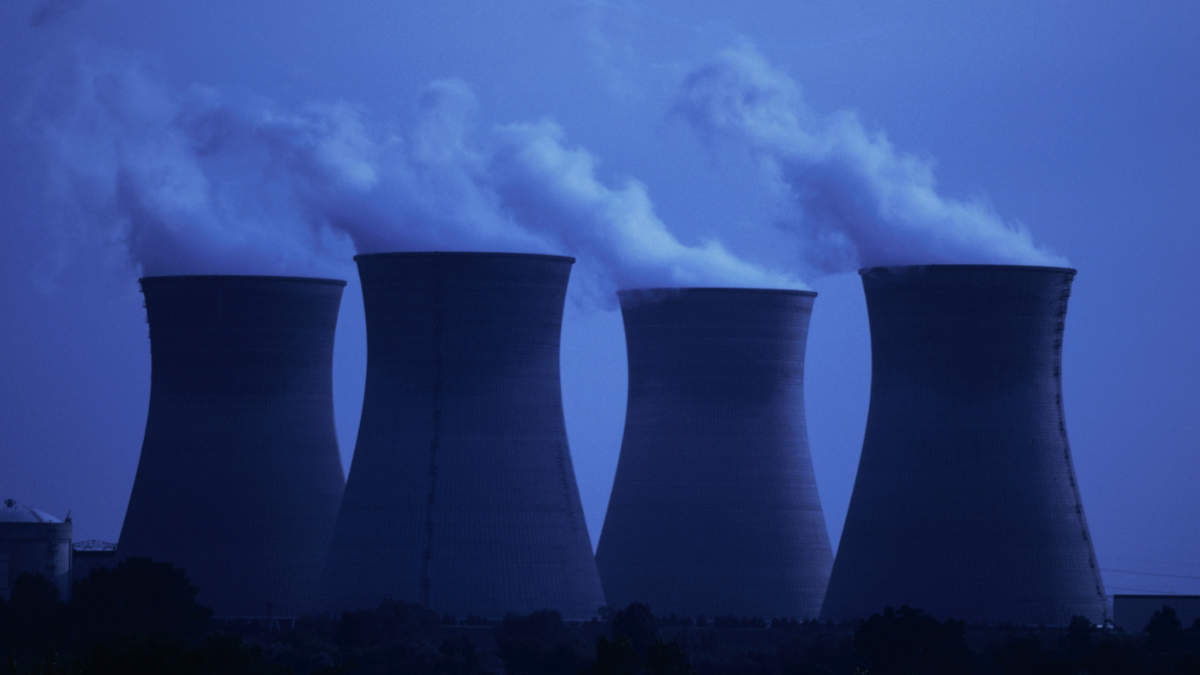Tribeca’s Guy Keller remains bullish about uranium as US pushes supply security
Here are the ASX companies with US uranium assets that could benefit from the push to secure domestic supplies.

Stockhead
Don't miss out on the headlines from Stockhead. Followed categories will be added to My News.
Tribeca’s Guy Keller says uranium fundamentals remain tight with supply in deficit and demand growing
Utilities waiting on dust to settle on tariffs before making moves to buy more uranium
Move to enhance domestic uranium supply could boost ASX companies operating in the US
Despite a tight supply backdrop, spot prices of uranium have slipped steadily to the US$65/lb mark after a brief foray past US$100/lb in January 2024.
Despite this baffling behaviour, Tribeca Investment Partners portfolio manager Guy Keller believes the global outlook for uranium over the medium to long-term remains unchanged.
Additional supply has not been responsive at current prices. Yet at the same time 65-odd reactors are currently under construction to add to the existing global fleet.
Keller is also unfazed about spot prices dropping back to levels that were last seen in 2023, telling Stockhead that the far more important long-term uranium prices, where 95% of volumes are sold to utilities, has only dipped from US$82 to US$80/lb.
“The long-term price is telling you that the fundamentals remain tight and that even US$80 is not a clearing price for pounds because there's not much being signed there,” he said.
“I don't see how (US$65/lb spot) lasts. There was an unnatural seller in the spot market that has now cleared. So they've gone and we've had a lot of global macro uncertainty, obviously with Trump, tariffs and equity markets selling off and pricing in a global recession.
“This global uncertainty has also meant that the real business has been put on hold because utilities would prefer to wait for the dust to settle on tariffs and which countries they're going to be allowed to buy uranium from.”
While utilities have been largely absent from the market this year for February, March. and beginning of April, they've started to come back in the last week with a little bit of activity noted, Keller added.
Prices driving development
What is clear is that neither US$65 or even US$80/lb uranium is enough for resource companies to push the button on new mine developments.
“Every greenfields project that was talking about a final investment decision has now delayed it because they are saying that even US$80/lb is not enough incentive for them to commit,” Keller said.
“The discussions I'm having is that US$100/lb is the starting point and that’s for US and African supply.
“Australia will need that price plus a change in a whole bunch of political things, while Canada might have high enough grades to make it work at US$80/lb but are stymied by bureaucracy around government permitting, indigenous timelines, seasonality with weather, and having to build pretty high capex, high intensity projects in difficult remote areas.”
Keller adds that nuclear generation capacity is now being pushed “extraordinarily hard” by global tech companies that are cashed up and spending billions rolling out technologies that require baseload electricity.
He believes there will be a crunch point where tech companies will question utilities about whether they have the uranium to support nuclear electricity for the next 20 years and if not, why not.
“I think from the discussions I've had, these tech companies have done the work on uranium supply and they're very well aware that this deficit is not going to be solved at these prices nor in the current structure of the market,” Keller added.
“I don't see the tech companies wanting to go and buy uranium miners nor do I see utilities wanting to do the same thing, but I think there's going to a really big refocus back to upstream uranium supply this year.”
US development outlook
It is not all about prices.
Donald Trump is also angling for supply security, signing an executive order on March 20 aimed at boosting domestic production of critical minerals to reduce reliance on foreign sources.
Certain tenders set out by the Department of Energy and Department of Defense also require US origin uranium.
This includes funding that’s still available for the purchase of domestically produced uranium for the beginnings of a strategic reserve.
“In theory, when you look at the facts of what the Trump administration is trying to achieve, there should be a premium for US origin pounds, even though uranium is not subject to any tariffs at the moment,” Keller said.
“But it has been a head scratcher to me as to why companies with US assets have fared just as badly as everybody else.
“I think probably the easiest explanation is those listed companies that are producing uranium in the US are just starting to restart their projects and every such project from 2024 has had problems with either cost overruns, delays, or ramp up issues, so there's potentially a little bit of that holding back some of these US projects.”
The US is also a long way from having enough domestic uranium production to ensure its own supply.
Despite producing at a six year high in 2024, the actual volumes turned out by US operators were still less than one million pounds.
“US utilities consume circa 50Mlb U3O8 per year, so there’s a massive disconnect,” said Keller.
“I think there will be a penny drop moment when the US works out that even doubling production to 2Mlb will still leave them nowhere near what they need for energy security on an absolute basis.”
Even with every mine from the last cycle firing, the US might get just above 10Mlb per year. Mines which fueled Cold War era production have all been mined out, without the capital put into exploration to find their replacements.
Keller says consolidation is needed within the current pool of uranium explorers, with bigger companies only occupying “bits and pieces of the map”.
“With the nature of in situ recovery in Wyoming, it doesn’t make any sense for four companies to build their own central processing plant,” he noted.
“There needs to be that consolidation where all these satellites feed into one area and it probably needs one company to control a certain part of a district.”
ASX-listed US uranium plays
So just who are some of the ASX-listed companies who are looking to contribute to the US’ domestic uranium production when the stars align?
GTI Energy (ASX:GTR) holds the Lo Herma ISR uranium project in Wyoming, where it recently completed conceptual design and cost estimation work completed for wellfield installation and processing plant construction.
This latest body of work follows positive results from hydrological and metallurgical studies and completes the key input studies for the scoping study, which remains on track to be delivered during Q2 2025.
Study manager, BRS Engineering Inc, is currently modelling project cashflow scenarios and integrating the wellfield construction plan, along with the processing and engineering study results, into a scoping study.
Alternatives being considered include a standalone central processing plant and a satellite production facility.
In parallel to this effort, an amendment to GTI’s current Drilling Notification Permit is being prepared, focused on further exploration of defined exploration targets to expand mineral resources.
The company has also completed four monitor wells, all of which have demonstrated sufficient submergence of Lo Herma mineralisation within the local groundwater system to support ISR mining.
Lab testing of mineralised sands has demonstrated hydraulic conductivity is in the upper range typical of sandstones in the Wyoming intermontane basins and confirmed that there is sufficient permeability for ISR mining methods.
Lo Herma mineralisation has also been found to be amenable to the alkaline in-situ leach process with uranium recoveries at ~75%, consistent with nearby Southern Powder River Basin Wyoming production projects.
Project resources currently stand at 6.21Mt at 630ppm eU3O8, or 8.57Mlb contained U3O8, with 32% or 2.78Mlb in the indicated category, which compares favourably against Ur-Energy’s nearby 8.8Mlb Shirley Basin ISR build, and Encore Energy’s 8.1Mlb Gas Hills ISR project
Over in Montana, close to the Wyoming border, Recharge Metals (ASX:REC) holds the Carter uranium project, which sits within 250km of six permitted ISR uranium production facilities.
Access is via US Highway 212, ~75km kilometres from the town of Belle Fourche, South Dakota.
The project was intensely explored by numerous major mining and energy companies during the late 1970s and early 1980s with exploration focused on the northern rim (extension) of the Powder River Basin from Wyoming into Montana.
Kerr McGee, one of the largest uranium producers during this era, in its joint venture with Chevron, was particularly active in the area and drilled thousands of reconnaissance and closer-spaced delineation holes on, and around the Carter project.
The project itself hosts a significant amount of uranium mineralisation with the deposits extending over a strike extent of approximately 11km. This mineralisation, which is related to an extensive system of roll fronts, is hosted in discrete uranium deposits, and along the oxidation-reduction interfaces throughout the area.
REC has purchased a large exploration database and is currently compiling and reviewing the wealth of information.
It recently met with local ranch owners to ensure a collaborative approach to land access.
The permitting process has kicked off with an experienced consulting group to ensure compliance with environmental and land use requirements, laying the groundwork for upcoming drilling.
Data compilation, geological review, and target generation are now in the final stages of planning, with drilling to focus on high-priority targets identified from historical data and recent evaluations.
At Stockhead, we tell it like it is. While GTI Energy and Recharge Metals are Stockhead advertisers, they did not sponsor this article.
Originally published as Tribeca’s Guy Keller remains bullish about uranium as US pushes supply security






